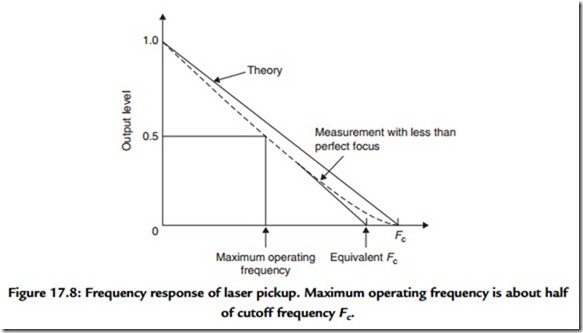Recording Media Compared
Of the various media discussed so far, it might be thought that one would be the best and would displace all the others. This has not happened because there is no one best medium; it depends on the application.
Random access memory (RAM) offers extremely short access time, but the volume of data generated by digital audio precludes the use of RAM for anything more than a few seconds because it would be too expensive. In addition loss of power causes the recording to be lost.
Tape has the advantage that it is thin and can be held compactly on reels. However, this slows down the access time because the tape has to be wound, or shuttled, to the appropriate place. Tape is, however, inexpensive, long lasting, and is appropriate for archiving large quantities of data.
However, discs allow rapid access because their entire surface is permanently exposed and the positioner can move the heads to any location in a matter of milliseconds. The capacity is limited compared to tape because in the case of magnetic discs there is an air gap between the medium and the head. Exchangeable discs have to have a certain minimum head flying height below which the risk of contamination and a consequent head crash is too great. In Winchester technology the heads and disc are sealed inside a single assembly and contaminants can be excluded. In this case the flying height can be reduced and the packing density increased as a consequence. However, the disc is no longer exchangeable. In the case of optical discs the medium itself is extremely thick and multiple platter drives are impracticable because of the size of the optical pickup.
If the criterion is access time, discs are to be preferred. If the criterion is compact storage, tape is to be preferred. In computers, both technologies have been used in a complementary fashion for many years. In digital audio the same approach could be used, but to date the steps appear faltering.
In tape recording, the choice is between rotary and stationary heads. In a stationary head machine, the narrow tracks required by digital recordings result in heads with many parallel magnetic circuits, each of which requires its own read and write circuitry. Gaps known as guard bands must be placed between the tracks to reduce cross talk. Guard bands represent wasted tape.
In rotary head machines, the tracks are laid down by a small number of rapidly rotating heads and less read/write circuitry is required. The space between the tracks is controlled by the linear tape speed and not by head geometry and so any spacing can be used. If azimuth recording is used, no guard bands are necessary. A further advantage of rotary head recorders is that the high head to tape speed raises the frequency of the off-tape signals, and with a conventional inductive head, this results in a larger playback signal compared to the thermal noise from the head and the preamplifiers.
As a result the rotary head tape recorder offers the highest storage density yet achieved, despite the fact that available formats are not yet in sight of any fundamental performance limits.
